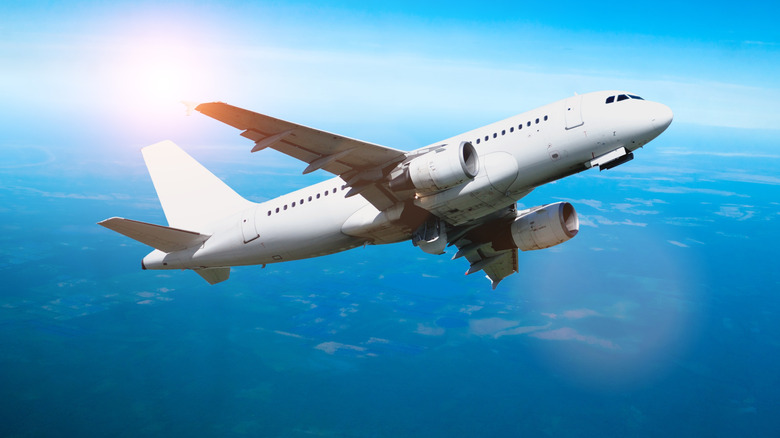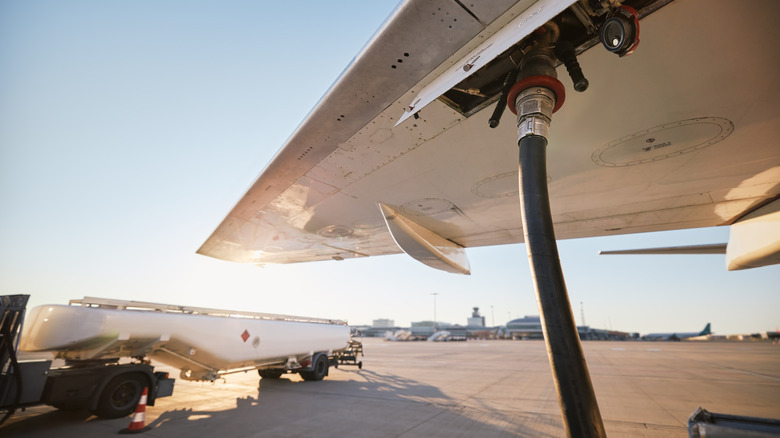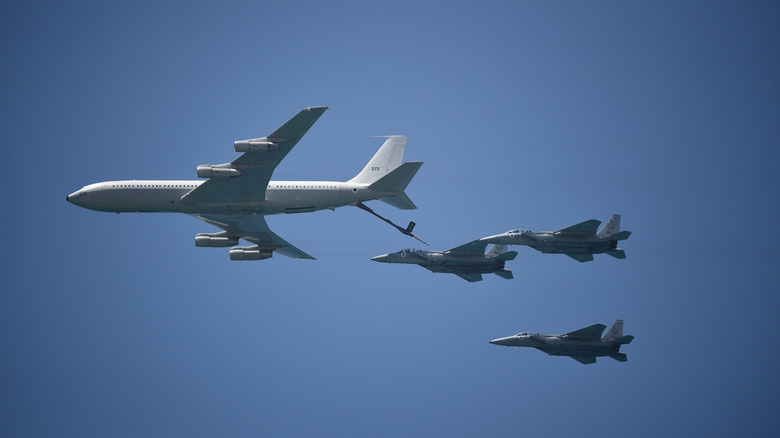Do Commercial Planes Ever Refuel In The Sky?
Commercial aircraft, in lots of ways, are the typically slower and more practical relatives of military aircraft. The U.S. Air Force's fighter jets, for instance, are often armed with an array of missiles that you certainly won't find on your average Boeing 747. The fact is, they're very different vehicles designed for very different purposes.
You might have witnessed the incredible ritual of military aircraft refueling while in flight. Important aircraft such as the Boeing KC-46 Pegasus tanker are the key to making this happen, and it's far from a flashy party trick: A military plane's role can take it all over the world. The difference is that the former may be needed to stay in the air for much longer periods at a time on particular missions. In 2024, a KC-46 tanker flew for 45 hours as part of Project Magellan, an exercise to learn more about extreme capabilities of mid-air refueling systems. Colonel Brent Toth explained to Forbes that this was possible "because the 46 can take gas, and we were refueled four times midair."
Refueling in the sky is a dangerous necessity for some of these aircraft, rather than a preference, and commercial planes avoid it for that very reason. The need to keep operational costs as low as possible, and therefore maximize profits, also inevitably plays a part. On top of all of this, there are typically hundreds of civilians aboard a commercial aircraft, and that's more than enough reason for an airline to be utterly risk-averse when it comes to refueling, as well as in all other matters. It's a more realistic option for military aircraft, which is why commercial ones avoid doing it.
Regulations for refueling commercial aircraft
There are vital safety protocols to consider where commercial aircraft passengers are concerned. With such aircraft generally refueling strictly on the ground, another thing to note is that the need to remain efficient will mean that aircraft need to be up in the air again as quickly as this can be safely accomplished. When this has to be done, though, there are often additional safety procedures to consider. Airbus, for instance, outlines some of these regulations in its magazine Safety First.
It notes that "today's short transit time used by some operators often requires refuelling operations while passengers are still — or already — on-board the aircraft." This operational freedom wouldn't be available in the same way if the aircraft refueled while still flying (it would be quite challenging to board at 30,000 feet after all), and so it can also be more efficient to refuel on the ground.
When this is done while passengers are aboard, Airbus notes that, like the cabin crew, the passengers need to be made aware that refueling is being performed, and everybody should also be prevented from engaging their seatbelts to ease egress from the aircraft should it be necessary. For the same reason, there must be a clear path for the chutes to be deployed at all times during refueling.
Another vital consideration, of course, is the incredible close proximity between aircraft that's necessitated by mid-air refueling. There's always a risk in such a maneuver, however experienced pilots may be, and it's one that operators certainly wouldn't take lightly. It's far safer and ultimately less costly to complete a scheduled flight and refuel.
Airborne refueling by military aircraft
Fuel is one of the primary outlays necessary to operate, of course, and it also adds considerable weight. For these reasons, commercial jets certainly don't make a habit of carrying a lot of excess fuel. Enough is allocated to make the required journey, along with an emergency reserve depending on the distance of the flight at hand and some potential complications that may occur. When it comes to refueling in mid-air, the existing system makes such maneuvers largely unnecessary. In military cases, however, there are good reasons for refueling on the go.
One important one is that the military has extensive experience in performing this maneuver, using a range of different aircraft. It's a tactic that has a long history, dating back to June 1923. The first aircraft to perform this astonishing maneuver was the De Haviland DH-4B, one of the first aircraft to fight in World War I. It had a joint role as a recon aircraft and bomber, also being armed with four machine guns.
Its range of 400 miles was one element that could certainly use augmentation, though, and so a length of hose passed between two DH-4Bs was used with great success. The potential of this first experimental effort would be teased out and developed until it finally, ultimately, extended the range of aircraft to essentially limitless.
A small team of such aircraft could refuel each other as well as other aircraft, a huge boon for military aircraft on long sorties, but a laughably impractical approach for commercial flights. They have the fuel to reach their destination, as a rule, and so refueling in this way could be counterproductive.


